Microsoft services are essential to running an enterprise.
Various businesses utilize Microsoft services.
As a corporate partner with decades of expertise, Mornex offers comprehensive IT services including hardware and software maintenance services backed up by Microsoft.
A cloud-based directory system called Azure Active Directory (also known as Azure AD or AAD) is a component of Microsoft’s Azure cloud computing system. Azure AD is primarily used to handle ids and administrative privileges, including user access to Microsoft applications like Dynamics, Intune, and the Microsoft 365 framework (which includes Office 365, as well as services such as Teams and Exchange Online). Additionally, outside SaaS (Software as a Service) applications and other assets are managed by Azure AD.
Active Directory: What Is It?
Active Directory is referred to as AD. You must comprehend the fundamentals of a DNS Server in order to fully understand what Active Directory is.
A server on the networks known as a domain manager administratively controls entry for people, PCs, and hosts. This is accomplished by AD.
The people and devices at your firm are organized in a system called Active Directory. It offers programs, file systems, printers, and other network assets identification and authorisation. The Active Directory databases are accessed and modified via LDAP and identification methods like Kerberos and NTLM.
In essence, AD keeps track of all your customers, PCs, and servers and verifies their identities when they login in (the network logon). Once logged in, AD also controls what people are permitted to do and view (authorisation). Additionally, it enables administration and control of Computers and Servers on the networks using Group Policy (thus, for instance, you could configure every user’s address bar web page to be your website, or you might forbid users from downloading other applications).
On one or more Domain Managers in their system, most well-established enterprises will have AD operating.
Characteristics
Boost business effectiveness
With a single click, virtualization software and directory-aware apps installed on Azure can have controlled domain services enabled. Maintaining identification credentials for your virtual servers and older apps comes at a reduced administrative and service cost.
Use the cloud to run outdated apps.
Simple on-premises application migration to a controlled domain. Utilize a unified identification system to simplify administration of all your apps, including current cloud applications and older, directory-aware applications.
Count on a service that is maintained and constantly accessible.
For your controlled domain to have maximum reliability, Azure AD Domain Services contains several DNS servers. With assured service availability and resistance to outages, ensure continuity of operations.
The advantages of Azure Active Directory
Azure AD’s initial advantage
Contrary to what the name might indicate, Azure AD is not just an AD edition for the cloud. It is very distinct although it accomplishes some of the identical tasks.
Individuals and organizations may be found in the safe online identity repository known as Azure Active Directory. When logging into an app that employs Azure AD for identification, customers have an id and password that they use. For instance, Office 365, Dynamics 365, and Azure use Azure AD for identification, as do all other Microsoft Cloud applications. Azure AD is already being used covertly if you have Office 365.
The next advantage of Azure AD
Azure AD controls accessibility to apps that employ cutting-edge login verifications like SAML and OAuth in addition to administering people and organizations. Apps are an item in Azure AD, and you may build an identification for them (or apps from other parties) and offer people use to it. Azure AD can link to hundreds of SaaS apps (like Salesforce, Slack, ZenDesk, etc.) with a single sign-on in addition to directly integrating to any Microsoft Web Site.
What Azure AD doesn’t perform in comparison to AD is as follows:
– A PC cannot be added to it in the same manner; only Windows 10 users can use Azure AD Join
– No Organization Policy exists.
– LDAP, NTLM, and Kerberos are not supported.
– There are no OUs or Forests; it has a flat configuration file.
– Azure AD doesn’t thus take the place of AD.
– It is not a server you can join.
Conventional on-premises technology and apps are very well managed by AD. Administering access permissions to cloud computing is a breeze with Azure AD. User administration is an element of crossover among their many tasks.
The Modern Era of Identity and Access Management
In the modern era, technology can give a company the competitive benefits they need to succeed. In latest days, there has been a trend toward a larger proportion of the workers freelancing. Since many businesses have moved more of their assets to the cloud, they are searching for remote alternatives that meet their use cases. For users’ apps to operate effectively, key features like Single-Sign-On (SSO) are required. For data systems groups within a business, particularly with the move to the cloud, it’s also critical to assess the administration burden of the Authentication and Authorization Service.
For a free consultation, leave your information below!
FAQ’s
How soon will modifications I submit to my Azure AD directory appear in my administered domain?
A managed domain is immediately updated whenever modifications are introduced to your Azure AD directory using the Azure AD UI or PowerShell. Running in the meantime is this synchronizing procedure. For this synchronisation to finish up with all the asset modifications, there is no set amount of time.
Can I activate Azure AD Domain Services on a virtualized environment created by Azure Resource Manager?
Yes. In an Azure Resource Manager virtualized environment, Azure AD Domain Services can be activated. When you build a maintained domain, traditional Azure virtual channels are no longer accessible.
Do the high accessibility choices in Azure AD Domain Services exist?
Yes. Two domain managers are present in each administered domain by Azure AD Domain Services. These domain managers are a part of the management solution; you do not control them or interact with them. The domain managers are dispersed throughout areas if Azure AD Domain Services are deployed in a zone that enables server locations. The domain administrators are dispersed throughout operational groups in locations that don’t enable distribution centres.









